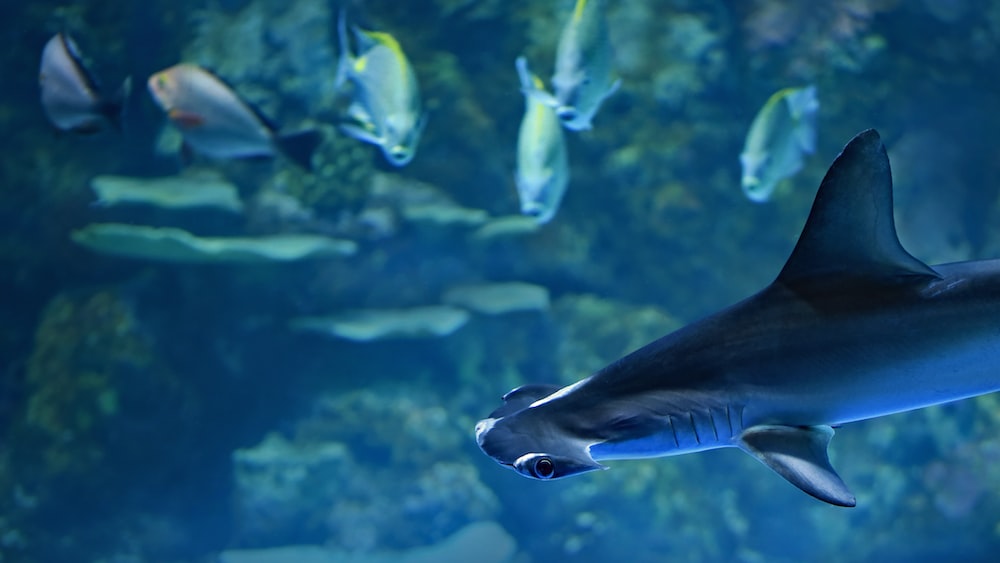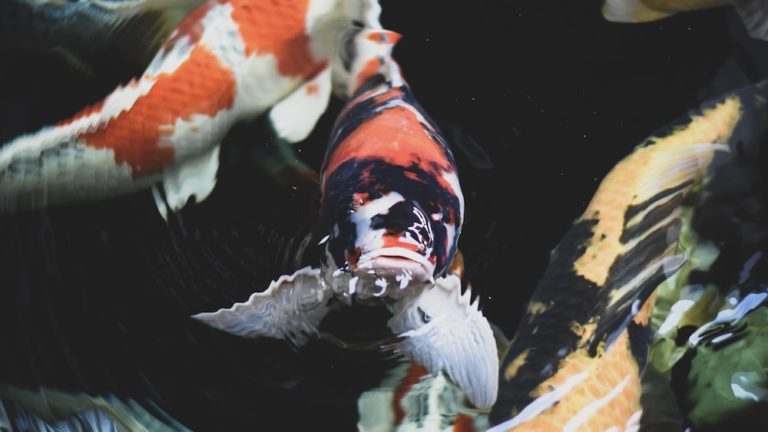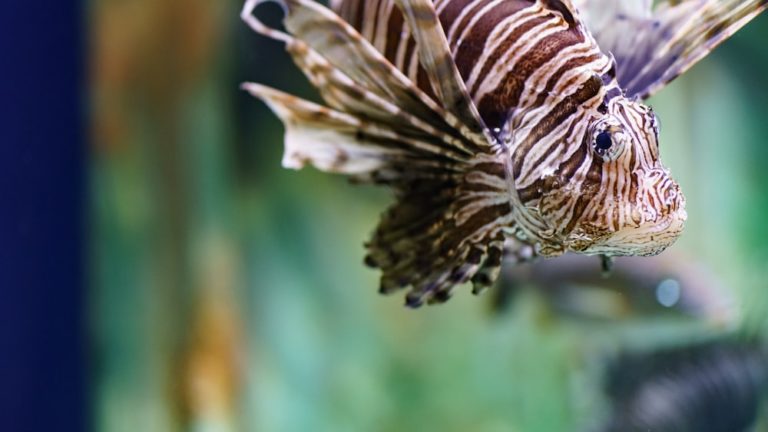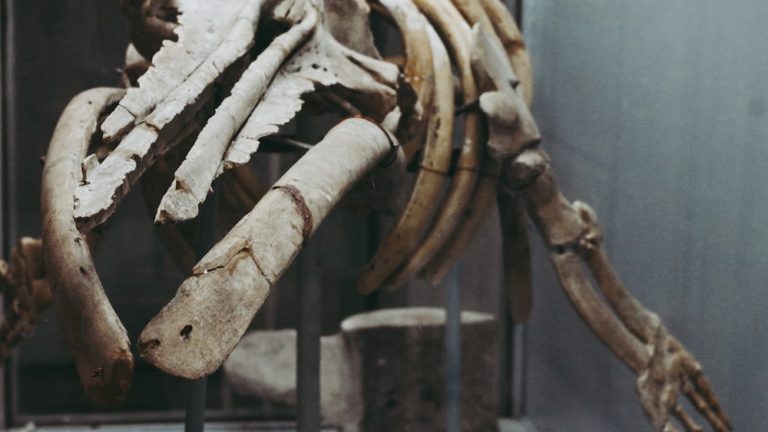Can Sharks Eat Turtles: A Detailed Exploration
Can Sharks Eat Turtles: A Detailed Exploration
Diving into the depths of our planet’s oceans reveals a vibrant tapestry of life where the mystery of marine dynamics unfolds before our eyes. Perhaps one of the most compelling dramas is the predator-prey relationship between sharks and turtles. For marine life aficionados and conservationists alike, the question “can sharks eat turtles” is not just a matter of curiosity but a layered inquiry deep into the intricacies of the marine food web.
Key Points:
- Sharks and turtles are intertwined in an ecological pas de deux as top predators and sought-after prey.
- Sharks serve a pivotal role in maintaining the delicate balance of marine life by culling the sick and weak, ensuring genetic vigor within fish populations.
- Sea turtles play a distinctive role in shaping marine habitats, acting as global gardeners by trimming seagrass beds to promote healthy growth and prevent overgrowth that could smother coral reefs.
- Great white sharks, tiger sharks, hammerhead sharks, and reef sharks are known to prey on sea turtles, each with unique hunting techniques.
- Sea turtles have evolved defense mechanisms, including their hardy shells and behavioral strategies, to avoid becoming easy prey for sharks.
- Documented encounters between sharks and sea turtles provide insights into the dynamic underwater ballet that unfolds between predator and prey.
- Shark predation is essential for the overall health of turtle populations, ensuring only the fittest survive and maintaining genetic vigor.
- Conservation efforts for sea turtles need to balance protection with maintaining the essential ecological role of sharks in marine ecosystems.
The ocean’s ballet of survival is complex, with each creature playing a crucial role. Sharks, with their sleek forms and powerful jaws, glide through the water, evoking both awe and fear. Meanwhile, the sea turtles, with their ancient lineage and graceful poise, navigate this liquid world with a quiet determination. To understand if sharks can indeed dine on these hard-shelled mariners, we must immerse ourselves in the scientific, emotional, and environmental nuances of their interactions.
So, buckle up your scuba gear, grab your notepads, and prepare to dive into a tale of fin, shell, and the survival of the fittest. Our exploration will glide through documented predator-prey encounters, examine sharks’ hunting techniques, and peek into the robust defense mechanisms of turtles. By journey’s end, we’ll surface not only with answers but also with a deeper appreciation for the interconnectedness of the ocean’s inhabitants.
The Predatory Dynamics Between Sharks and Turtles
The liquid universe of the deep blue is not just about coexistence; it’s a game of adaptation and survival where sharks and turtles often find themselves intertwined in an ecological pas de deux. As top predators and sought-after prey, they engage in a daily dance that shapes the seascape and dictates the ebb and flow of life beneath the waves. Let’s submerge into the depths of their interactions and unearth the fascinating ways these marine vertebrates influence one another.
The Natural Role of Sharks in Marine Ecosystems
In the world’s vast aquarium, sharks reign supreme as apex predators, maintaining the delicate balance of marine life. These impressive creatures serve a pivotal role in culling the sick and the weak, ensuring genetic vigor within fish populations. Their presence alone can regulate the behavior of other marine animals, encapsulating the essence of the ocean’s check-and-balance system.
Sharks‘ predatory skills are not only awe-inspiring but also critical for the overall health of the ecosystem. Without these formidable hunters, prey species might proliferate unchecked, leading to an imbalance that could cascade through the food web, leaving the ocean’s rhythm out of sync. It’s the sharks’ silent contribution that keeps the dynamic underwater world harmonious and thriving.
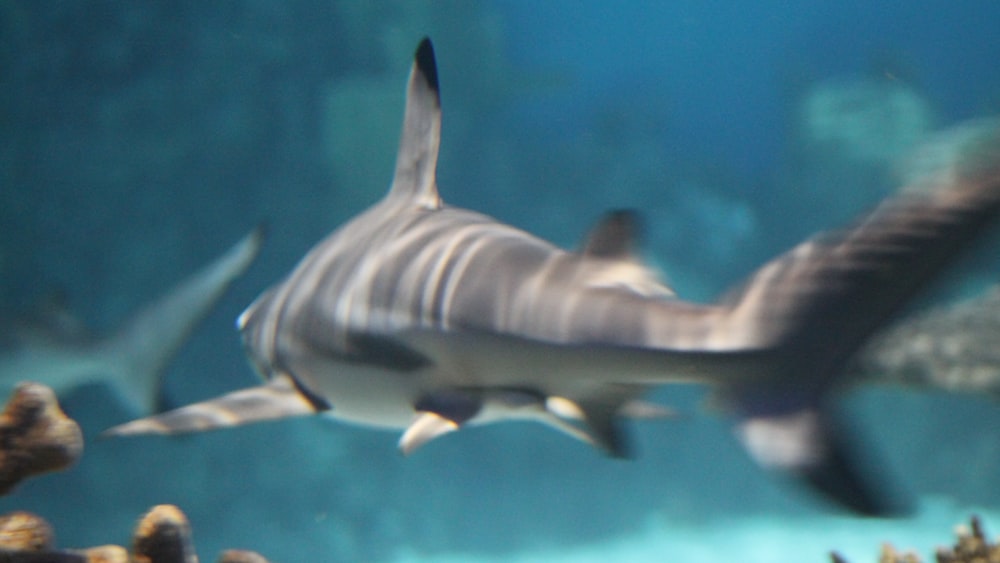
Sharks play a crucial role in maintaining the balance and health of the ocean’s ecosystem.
Sea Turtles’ Place in the Oceanic Food Chain
The sea turtle, an ancient mariner of our world’s oceans, carves out a unique niche in this underwater saga. Majestic and serene, turtles are not merely passive participants; they play a distinctive role in shaping marine habitats. With diets that include seagrass, they act as global gardeners, trimming the beds to promote healthy growth and prevent overgrowth that could smother coral reefs and impede fish nurseries.
However, despite their formidable shells, turtles are not untouched by predators. Young hatchlings have a myriad of threats lurking at every corner, from birds to crabs, and as they mature, their woes don’t diminish entirely – adult turtles may become the focus of an oceanic chase where sharks often emerge as the dogged pursuers. This cat-and-mouse game, or rather, shark-and-turtle chase, highlights the interplay between predator and prey that is essential for the natural regulation of species populations.
Shark Species Known to Prey on Turtles
The oceans house a variety of sharks with a taste for shelled delicacies. Some are renowned for their ability to breach turtle defenses, while others may only opportunistically snack on these reptiles. But which of these cartilaginous hunters commonly include turtles on their menu, and under what circumstances? Let’s sink our teeth into the specifics and identify the key shark species that test the sea turtle’s survival skills.
Great White Sharks and Their Hunting Techniques
The great white shark, the ocean’s quintessential predator, has earned its place at the top of the food chain through a combination of raw power and finely tuned hunting strategies. Employing ambush tactics, these sharks often stalk their prey from the depths, soaring upwards in a burst of speed to catch turtles off guard. The element of surprise is crucial, as a well-prepared turtle can be a formidable adversary even for a great white.
Armed with serrated teeth and massive jaws, great whites can exploit any weakness in a turtle’s armor. They mainly target the flippers or head, where the shell’s protection is less pronounced. These sharks’ hunting prowess is a spellbinding spectacle of power and precision, reflective of nature’s raw beauty and the grim realities of the survival of the fittest.
Tiger Sharks: The Sea Turtle Predators
Among the various diners of the deep, tiger sharks have a special penchant for hard-shelled hors-d’oeuvres. Their curved, serrated teeth are the perfect cutlery for slicing through the tough exterior of sea turtles. Through powerful bites and a shake of their head, these sharks can crack open a shell to reach the tender morsels inside. The saying “you are what you eat” rings especially true for tiger sharks who, with their diverse diets, showcase the adaptability and opportunistic nature required to thrive in the ocean’s arenas.
Besides their dental dexterity, tiger sharks are also known for their cunning intelligence and methodical hunting strategies. They’re often observed inspecting their potential meals carefully before deciding on the best angle of attack. This careful deliberation, paired with the brute force of their jaws, makes them one of the turtles’ most tenacious predators. And while encounters can be fierce, they’re also an awe-inspiring testament to the resilience and cunning evolved over millions of years in both turtles and sharks.
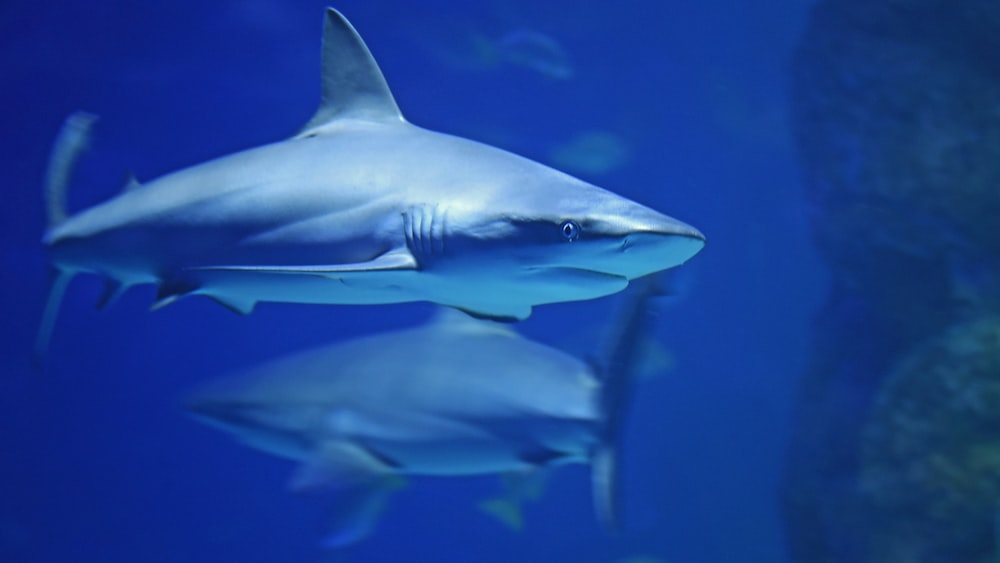
Hammerhead Sharks’ Interaction with Sea Turtles
Hammerhead sharks, with their uniquely shaped heads and wide-set eyes, navigate the oceanscape with a different approach when interacting with sea turtles. Their cephalofoils provide enhanced binocular vision and electroreception capabilities, making them adept at detecting prey even buried under sand. While not as commonly associated with turtle predation as their great white or tiger counterparts, hammerheads still represent a credible threat to the wandering shells of the sea.
The scalloped hammerhead, in particular, is known to patrol the reefs where juvenile turtles often hide. However, a healthy respect exists between these two species, with turtles being aware of the hammerhead’s presence and modifying their behavior accordingly. This delicate tango under the sea is one of mutual wariness and a clear sign of the evolutionary arms race that continues to shape the lives of both predators and prey alike.
Hammerhead sharks use their unique head shape and sensory capabilities to hunt sea turtles, contributing to a delicate evolutionary dance of mutual wariness between the two species.
The Reef Sharks’ Diet and Sea Turtles
Reef sharks, those streamlined patrollers of the coral kingdoms, add another dimension to the tapestry of interactions with sea turtles. Their daily routes around the coral labyrinths often intersect with the paths of foraging turtles. Reef sharks tend to have a less aggressive approach when compared to the likes of great whites or tiger sharks. Yet, young turtles or those weakened by illness or injury may still fall prey to these opportunistic feeders.
It is the blacktip reef shark that is often spotted in the shallows, darting between the corals, and occasionally nipping at the flippers of unsuspecting turtles. This ecological interaction demonstrates the importance of healthy reef systems that support a diversity of life, including both predators like sharks and prey such as turtles. These encounters, however aptly disguised as an underwater dance, underline the harsh reality of nature: eat or be eaten.
The Sea Turtle’s Defense Mechanisms
In the blue serenity of the oceanic world, sea turtles are not mere sitting ducks awaiting their fate at the jaws of sharks. Evolution has equipped these ancient swimmers with a suite of defense mechanisms more diverse than the coral reefs they inhabit. From their hardy shells to their keen sense of awareness, let’s explore how turtles steer clear of becoming an easy catch in the deep-sea dining scene.
The Anatomy of a Sea Turtle’s Shell
The sea turtle’s shell isn’t just a mobile home; it’s a fortress of keratin and bone. Its dome-like shape and rigid structure provide a sanctuary against predators, including those with appetites for turtle. For a shark, the challenge lies in finding a chink in this armored exterior. The shells of adult turtles are particularly formidable, often deterring all but the most persistent or clever of shark species.
While the shell is the turtle’s primary shield, it isn’t just about defense. Its hydrodynamic design aids in swimming efficiency, slicing through the currents with ease. Both armor and vessel, the shell is a testament to nature’s ingenuity in crafting survival tools through the unforgiving forces of natural selection.
The sea turtle’s shell is a fortress of keratin and bone, providing both defense against predators and aiding in swimming efficiency.
Behavioral Strategies for Avoiding Predation
The clever sea turtle employs more than just brute defense; their survival playbook includes behaviors crafted through epochs of evolution. Turtles are known to swim in shallow areas, where sharks are less likely to venture, or hide in seagrass beds that offer camouflage. When a shark is on the tail, a turtle may flee with surprisingly swift turns or present their flat, hard shell – a much less appetizing angle for any would-be predator.
Hatchlings, though highly vulnerable, rush to the ocean in numbers, a chaotic dash for survival, banking on the odds that some will make it through the gauntlet of predators. These strategic behaviors, combined with physical adaptations, illustrate the turtles’ knack for survival against the odds. Despite the sharks’ impressive hunting abilities, turtles remind us that even in nature, a strong defense can be as formidable as the fiercest attack.
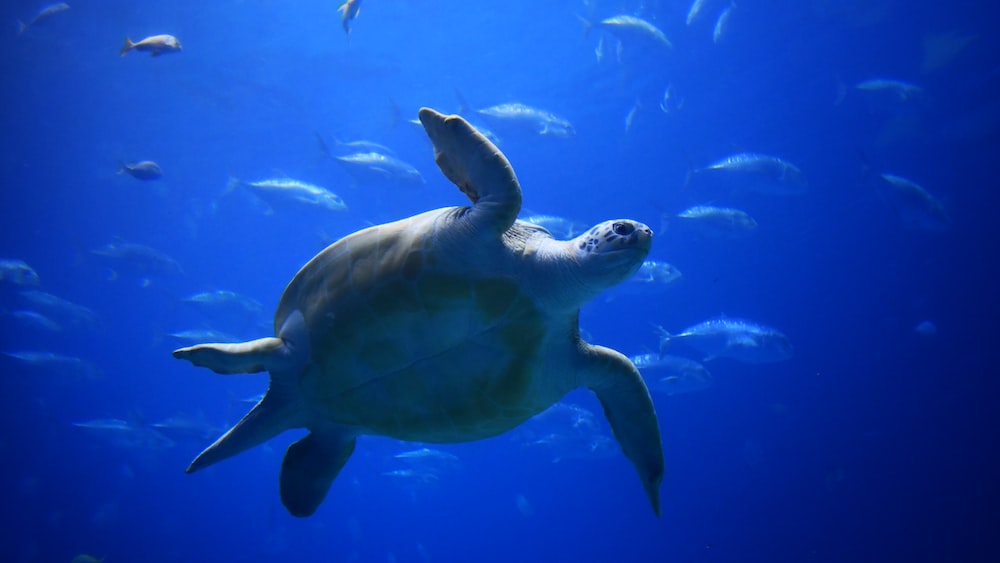
Documented Encounters Between Sharks and Turtles
Throughout the briny depths, there have been scores of documented encounters between sharks and sea turtles that paint a vivid picture of this predatory dynamic. Marine biologists and underwater cameramen have captured footage and tales of these interactions, with varying outcomes. What’s fascinating to sea life enthusiasts and conservationists alike is the survival dance between graceful prey and relentless predator as they play out the ancient rituals of the ocean’s food chain.
Analysis of Tiger Shark Attacks on Sea Turtles
The tiger shark, often coined as the ‘waste basket of the sea’ for its undiscriminating palate, has a reputation for preying on sea turtles. These powerful predators use their keen sense of smell and specialized serrated teeth to gain the upper fin, as it were. Marine researchers have observed tiger sharks indulging in a bit of “shell cracking,” where they focus on the weaker points of the turtle’s shell, such as the flippers or the edges, to breach this tough armor.
Tagging studies have revealed some intriguing tactics employed by these striped hunters. Notably, they wait in areas where turtles come up to breathe or bask in the warm sunlight. By staying close to nesting beaches or seagrass beds, tiger sharks can ambush unsuspecting turtles with a quick burst of speed. In many of these documented tussles, the tiger shark often emerges victorious, showcasing the brutal yet natural balance of marine predation.
However, not all skirmishes are one-sided. Remarkably, some turtles manage to escape by employing defensive maneuvers such as flipping onto their backs, making it harder for sharks to maintain a grip on their shells. Observing these interactions contributes to our understanding of the dynamic underwater ballet that unfolds between predator and prey.
Great White Sharks and the Risks of Preying on Turtles
Great White Sharks, formidable as they are, don’t shy away from the challenge of sea turtles. They are one of the apex predators that can, with a mighty chomp, inflict serious damage even on a hard-shelled turtle. However, engaging with such a tough meal comes with its risks. The intricate design of the turtle’s shell, a marvel of natural engineering, can occasionally cause injury to the shark’s jaw or teeth if the attack isn’t perfectly executed.
Furthermore, it’s a considerable expenditure of energy for Great Whites to tackle turtles, seeing as they’re more suited to feasting on fatty seals and fish. These energy dynamics play a crucial role in shaping the feeding habits of these sharks and deter them from making turtles a regular part of their diet. Thus, while the answer to “can sharks eat turtles” is yes, the practicalities of such dietary choices are more complex for the great white.
Great White Sharks can eat sea turtles, but it’s not their ideal meal due to the energy expenditure and potential risk of injury.
The Impact of Sharks on Turtle Populations
Shark predation is an intrinsic part of the tapestry that maintains the delicate balance of turtle populations. The interactions between these marine creatures have evolved over millennia, leading to a dynamic where each influence the survival and reproductive success of the other. It is this very predation that often spurs discussions among marine conservationists on the essential nature of predators within ecosystems.
Predation Pressure and Turtle Conservation
The predatory pressure exerted by sharks on sea turtles has significant implications for conservation efforts. It may seem counterintuitive, but natural predation can be essential for the overall health of turtle populations, ensuring only the fittest survive and maintain the genetic vigor of the species. Conservationists often find themselves walking a tightrope, balancing the protection of endangered turtles with maintaining the ecological role sharks play. Every bite and escape is a note in the opus of nature’s own conservation strategy.
Sharks’ selective hunting habits can influence turtle behavior and movements, ultimately guiding conservation measures such as the protective designation of certain foraging and nesting areas. In some locales, turtle populations have increased due to conservation actions, which in turn, may result in more frequent shark-turtle interactions. Careful monitoring of these changes is vital to ensure that efforts to save one species do not inadvertently harm another.
Moreover, these insights help shape educational programs that paint a clearer image of the ecosystem’s complexity and the importance of every creature within it – from the mightiest shark to the smallest plankton. Every conservation decision ripples through the marine environment, highlighting the intricate interplay between predators and their prey.
The Role of Sharks in Healthy Turtle Populations
Sharks have a pivotal role in ensuring healthy turtle populations, much like conductors in the symphony of the seas. They help maintain ecological balance by removing sick or weaker individuals, thereby preventing the spread of disease and contributing to the genetic strength of sea turtle groups.
Healthy shark populations also signify a robust and properly functioning marine ecosystem, which in turn supports the prosperity of all its inhabitants, including turtles. Overfishing, habitat loss, and climate change can disrupt this harmonious balance, underscoring the importance of comprehensive marine management practices that protect both sharks and turtles alike.
FAQs
1. What adaptations do sea turtles have to avoid shark attacks?
To avoid shark attacks, sea turtles have developed several adaptations such as streamlined shells for swift swimming, and the ability to tuck their limbs and heads close to their bodies, making them less accessible to would-be predators. Their hardened shells offer substantial protection, though not impenetrable, against shark bites.
2. Can a shark’s bite penetrate a sea turtle’s shell?
A shark’s bite can penetrate a sea turtle’s shell, particularly when the shark is one of the larger species with strong jaws and teeth, like the great white or tiger shark. However, the shell’s robustness can deter or at least minimize the damage from such attacks, giving the turtle a fighting chance to survive.
3. Are certain species of sea turtles more vulnerable to shark predation?
Certain species of sea turtles are more vulnerable to shark predation, particularly the smaller or younger turtles whose shells are softer and less developed. Species that frequent shark-rich waters or those that nest in areas with high shark activity are also at increased risk.
4. How does human activity affect the interaction between sharks and sea turtles?
Human activity affects the interaction between sharks and sea turtles by altering their habitats and food availability. Overfishing can deplete shark prey, leading to heightened predation on turtles, while habitat destruction, such as coral reef damage, affects the sheltering spaces and feeding grounds of both species.
Conclusion
Diving into the depths of the underwater drama between sharks and sea turtles reveals intricacies that are as much a part of the ocean’s narrative as the tides themselves. The question, “can sharks eat turtles,” opens up a world of ecological connections, wherein every nibble and narrow escape is part of a delicate dance for survival.
Through the lens of conservation and with the bubbling enthusiasm of marine life admirers, we recognize the value of each glimpse into the sharks’ hunting prowess and turtles’ persistent resilience. As we resurface from these tales, let’s not forget that every splash we make ashore echoes beneath the waves, influencing the destinies of these magnificent sea creatures.
And so, fellow ocean wanderers and eco-warriors, I bid you farewell. May your curiosity about the seas never wane, and may your actions always reflect the reverence we owe to our aquatic kin. Until our next nautical narrative, keep your fins aflutter and your hearts in the current. With a wave and a splash,
Jasper Flynn.

